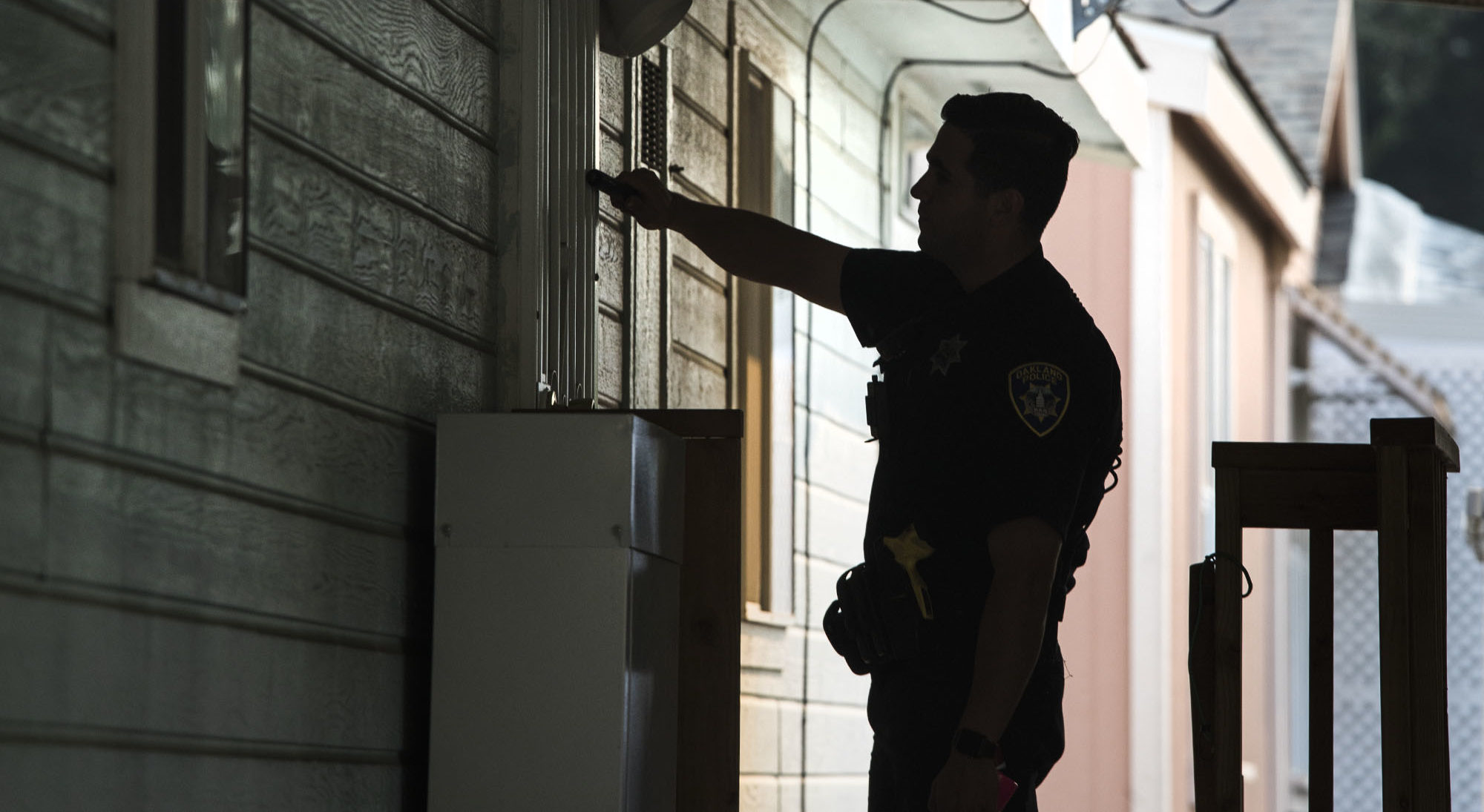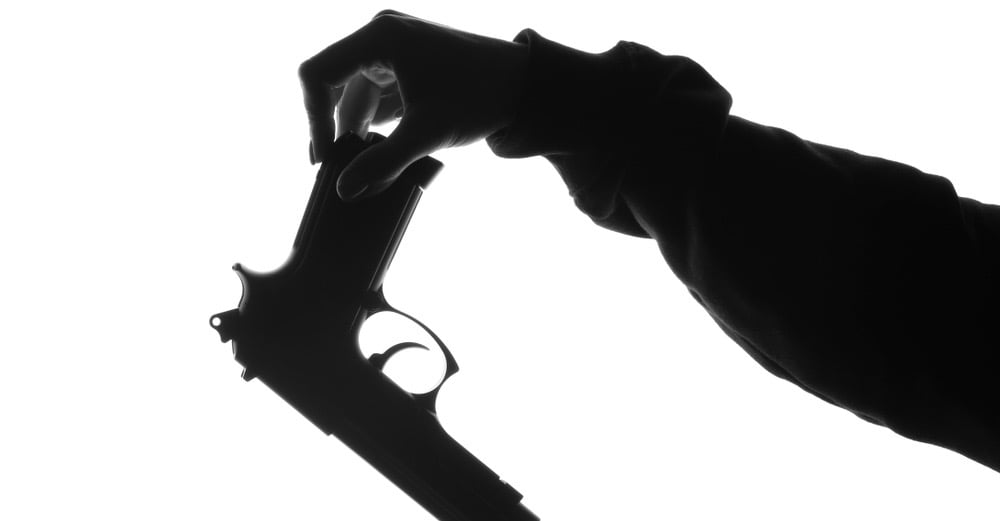In December, a man in Monroe, Washington, was arrested after posting images of himself on Facebook wearing a gas mask, holding an AR-style rifle, and surrounded by white power iconography. He also posted repeated threats to kill “30 Jews” and commit a school shooting. Local authorities charged the man with felony threatening, but two days before, they used a so-called extreme risk protection order (ERPO) to seize a dozen of his guns.
ERPOs, commonly referred to as red flag laws, allow a third party — depending on the state, it can be a police officer, family member, school official, or mental health provider — to petition a judge for a warrant to seize legally owned guns if someone is determined to be an immediate threat to themselves or others.
In the Washington case, local authorities believed the man “posed a significant danger in the near future,” Courtney O’Keefe, a spokesperson for the Snohomish County Sheriff, said in an email. “The ERPO law, which has a high threshold and is used very rarely in our state, allowed us to remove his firearms from his residence in order to protect both himself and others.”
Although the first civil gun-seizure law in the United States has been in place for two decades, such laws have been spreading rapidly, particularly since last year’s school shooting in Parkland, Florida. States created the laws to limit shootings, and though a handful of studies have suggested that they work, it’s still too early to fully measure the effectiveness of the laws.
“We don’t have empirical evidence of extreme risk protection orders’ impact on future violence. But the logic behind them is sound,” said April Zeoli, a public health criminologist at Michigan State University who recently began a study of ERPO laws in Florida, Oregon, and Vermont.
“The fact that they are modeled after domestic violence restraining orders gives us good reason to think they will reduce gun violence,” Zeoli added. She explained that while ERPOs are not yet widely applied and its thus hard to determine their effectiveness, the example of domestic violence orders suggest that, over time, they will become more common, driving down shooting rates. “When domestic violence restraining orders first hit the scene almost 30 years ago, no one knew about them,” she said. “But now everyone knows what they are.”
Connecticut created the first ERPO in 1999 after a workplace shooting. Indiana passed a similar law in 2005. In 2014, California created gun violence restraining orders after the Isla Vista shooting, in which a young man killed six people, three by gun, and injured 13. Before the rampage, the perpetrator’s parents had pleaded with local police to confiscate his weapons. But the police had no recourse, because he hadn’t been convicted of a felony or involuntarily committed to psychiatric care.
Since 2014, 12 more states have passed similar laws. Several other states are now considering similar legislation.
An ERPO is only as good as its enforcement
While the purpose of ERPOs is clear, implementation varies over time and from place to place.
Despite California’s legislation, police and civilians in the state were slow to file petitions during the first year the law was in effect: Judges in the nation’s most populous state issued only 86 orders in 2016. In comparison, Oregon, which has about one tenth of California’s population, issued 42 orders in the first six months its law was in effect.
“We don’t have empirical evidence of extreme risk protection orders’ impact on future violence. But the logic behind them is sound.”
April Zeoli, public health criminologist at Michigan State University
In some states, law enforcement authorities have had to remind other law enforcement authorities that ERPOs were an available legal tool in the first place. After Parkland, Indiana’s attorney general issued an advisory to remind prosecutors that the state had had a civil gun-seizure law on the books for more than a decade.
But other localities have a dedicated staff for pursuing ERPOs and training authorities in their use.
Kimberly Wyatt, who runs the gun-seizure program for the prosecutor’s office in King County, Washington, said when she first began filing the petitions she was surprised at how many were for people at risk of suicide. In the last six months, law enforcement have referred more and more cases of people threatening to harm others, she said.
“I have seen folks who were in the midst of a behavioral health crisis come into court and thank law enforcement for saving their lives,” she said.
Maryland seen as the national leader
Of all the states with ERPO laws on the books, some experts say Maryland has become the national leader in implementation, despite having had a law in effect only since October. “I was really struck by Maryland’s first three months using the orders. The law was filling a needed function,” said Lindsay Nichols of the Giffords Law Center to Prevent Gun Violence, which advocates for stronger gun laws.
Part of the reason for their effectiveness in Maryland is that authorities there can issue an order 24 hours a day, seven days a week.
Sheriff Darren Popkin of Montgomery County, just outside of Washington, D.C., said in an interview that Maryland judicial officers, called district court commissioners, who are on duty after normal business hours are crucial. Most of the incidents that might prompt police or family members to seek an order — like domestic violence, substance abuse or suicide threats — happen in the evening, once courts have closed.
But even within Maryland, the use of ERPO laws can vary widely by county, according to data provided by the Montgomery County Sheriff, which tracks the monthly petition totals. In Anne Arundel County, which was the site of the June 2018 Capital Gazette mass shooting, police and residents petitioned for 73 gun seizures in March. But in Baltimore City, with a comparatively larger population and a higher rate of violence, citizens and law enforcement have yet to file more than 14 petitions in a single month.
Fears and realities
Despite the diffusion of ERPOs since Parkland, gun rights organizations remain hostile to the laws. The National Rifle Association signaled some openness to the them in the immediate aftermath of the Parkland shooting, but the group has opposed ERPO legislation since then. It cites threats to due process in the rush to confiscate guns, or the possibility that people with grudges could file false reports.
In practice, the laws are subject to judicial oversight. In Maryland, judges granted 258 petitions in March, or slightly more than half those sought. Another 146 were denied, and 102 were dismissed as no longer necessary.
While Wyatt, the Kings County official, noted that Washington did not have data as detailed as Maryland’s, she described a similarly rigorous process. Moreover, filing a false ERPO is a crime in all states with such a law, and lying during the hearing process would be perjury.
Sheriff Popkin said he has found that many petitioners use the ERPOs not to settle a grudge or even protect themselves, but to help troubled people they care about. In Maryland, he said, six in 10 petitions are filed by family members or mental health providers. “I’ve received phone calls back from some petitioners in the case, and the petitioners have told me they are very grateful,” Popkin said. “It saved their loved one’s life.”


